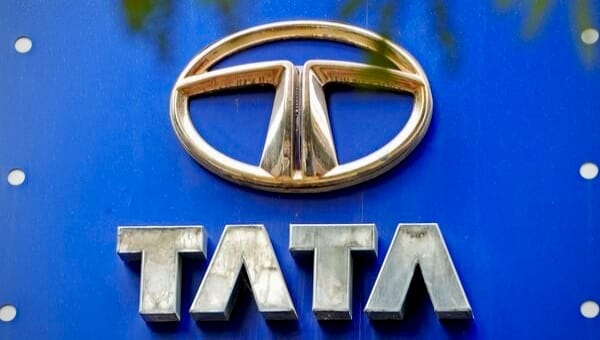
The New Frontier: Global AI Titans Bet Billions on India’s Youth Revolution
The world’s leading artificial intelligence companies—from Silicon Valley behemoths like Google, Microsoft, and OpenAI to chipmaking giant NVIDIA—are intensifying their strategic pivot towards India, recognizing the nation’s colossal youth demographic as the crucible for the next wave of AI innovation and market growth. This aggressive outreach, marked by significant investments, talent development initiatives, and localized product strategies, signals a global race to cultivate and capture a market poised to redefine the future of AI. India’s unique blend of a vast, English-speaking, digitally native population, robust startup ecosystem, and proactive government policies is attracting unprecedented attention, positioning it not just as a consumption market but as a critical hub for AI development and deployment, with profound implications for investors, policymakers, and the global technology landscape.
India: The Unsung AI Superpower in Waiting
For decades, the narrative around AI innovation has largely centered on the U.S. and China. Yet, beneath the surface, a new contender has been steadily building its capabilities: India. What truly sets India apart in this evolving global chess game is its demographic dividend – over 65% of its 1.4 billion people are under 35, a population group uniquely primed for technological adoption and innovation. This isn’t just a workforce; it’s a dynamic, aspirational generation hungry for opportunity, increasingly connected to the digital world, and eager to leverage cutting-edge tools.
The numbers are compelling. India boasts over 800 million internet users, a figure projected to surge past 1.2 billion by 2025. This massive digital footprint creates an unparalleled data playground for training sophisticated AI models, offering diversity and scale that even developed economies struggle to match. Global AI giants understand that access to such a diverse dataset and a young, adaptable talent pool is not merely an advantage but a strategic imperative for future dominance in an increasingly competitive AI landscape.
The Strategic Blueprint: Investment, Talent, and Localisation
The playbook for global AI companies in India is multifaceted, extending beyond mere market entry. It’s a deep immersion strategy focused on cultivating an entire ecosystem.
Investment Influx and Partnerships: We’ve witnessed a dramatic uptick in venture capital flowing into Indian AI startups. In the first half of 2023 alone, Indian AI startups secured over \$1.5 billion in funding, a significant leap from previous years, much of it from global investors and corporate venture arms. Google’s India Digitalization Fund, for instance, has already committed \$10 billion, with a substantial portion earmarked for AI-driven ventures. Microsoft has deepened its ties with major Indian tech firms and public sector enterprises, offering cloud infrastructure and AI services crucial for scalable AI development. OpenAI, while not directly investing at the same scale, is seeing its APIs widely adopted across the Indian startup ecosystem, fueling a new wave of generative AI applications.
Cultivating Talent: From Labs to Classrooms: Beyond financial injections, the focus is squarely on talent development. NVIDIA, a critical enabler of the AI revolution through its GPU technology, has ramped up its developer programs and academic collaborations across India. “India’s engineering talent is world-class, but the scale is what truly sets it apart,” noted Jensen Huang, CEO of NVIDIA, during a recent virtual address to Indian tech leaders. “We’re investing heavily in ensuring our platforms are accessible and that next-gen AI skills are being built from the ground up.”
Microsoft’s ‘AI for All’ initiative, Google’s extensive AI skilling modules, and partnerships with leading Indian Institutes of Technology (IITs) are not just CSR activities; they are strategic pipelines designed to funnel skilled individuals directly into the global AI economy, often within these very companies or their partner networks. This hands-on approach ensures a steady supply of engineers, data scientists, and AI researchers conversant with the latest tools and methodologies
Hyper-Localisation for Mass Adoption: The true genius of the Indian strategy lies in its commitment to localisation. Unlike uniform global deployments, AI solutions in India require nuanced adaptation for its myriad languages, diverse cultural contexts, and unique economic challenges. Companies are actively exploring AI models trained on Indic languages, aiming to break down digital barriers and extend AI’s benefits to India’s vast non-English speaking population. Initiatives like BharatGPT are gaining traction, seeking to build open-source, large language models (LLMs) tailored for the Indian linguistic and cultural fabric. This is crucial for applications in sectors like agriculture, healthcare, and financial inclusion, where local context is paramount.
The Economic Ripple Effect: Jobs, GDP, and Global Standing
The implications of this AI influx are profound for India’s economy and its global standing. The Indian AI market is projected to grow at a Compound Annual Growth Rate (CAGR) exceeding 30%, potentially reaching \$15-20 billion by 2027. This isn’t just about revenue; it’s about job creation in high-skill sectors, fostering innovation, and increasing productivity across industries.
“India has the potential to become a net exporter of AI solutions and talent,” says Dr. Anjali Sharma, Head of AI Research at IIT Bombay. “Our advantage isn’t just cheap labor, it’s intelligent, adaptable human capital paired with a massive digital infrastructure. This translates into sophisticated AI products developed *in* India, *for* the world, and *for* India.”
Beyond direct employment in tech, AI is set to revolutionize traditional sectors. Imagine AI-powered tools assisting farmers with crop yield predictions in local dialects, or healthcare diagnostics becoming accessible and affordable in remote villages. This democratisation of technology has the potential to lift millions out of poverty and bridge the development gap, fundamentally altering India’s socio-economic landscape. For policymakers, the challenge lies in leveraging this wave while ensuring equitable access and managing the inevitable disruptions to traditional job markets.
The Geopolitical Stakes: India as an AI Battleground
The global AI giants’ aggressive push into India also carries significant geopolitical weight. As the US and China grapple for technological supremacy, India emerges as a critical third pole. Its non-aligned stance, coupled with its immense potential, makes it an attractive partner for Western tech firms seeking to diversify their global footprint and mitigate supply chain risks associated with over-reliance on any single region.
This dynamic positions India not just as a market but as a strategic partner in shaping global AI governance, standards, and ethical frameworks. Policymakers in Delhi are acutely aware of this leverage, pushing for initiatives like the ‘IndiaAI’ mission, which aims to make India a global leader in AI development while promoting responsible and ethical AI deployment. This involves creating sandbox environments for innovation, incentivizing R&D, and building a robust regulatory framework that balances innovation with data privacy and security.
Navigating the Challenges: The Road Ahead
Despite the immense promise, the path is not without its hurdles. The digital divide, though narrowing, still exists, particularly in rural areas. Ensuring equitable access to AI education and infrastructure is paramount to prevent a widening of societal inequalities. The risk of job displacement in sectors amenable to automation also needs proactive policy interventions, including robust reskilling and upskilling programs.
Moreover, the ethical considerations of AI – bias in algorithms, data privacy, and surveillance – require vigilant oversight. As MoneyFint has often highlighted, responsible AI development is not just a buzzword; it’s a foundational pillar for sustainable growth and public trust. India’s evolving data protection laws and ethical AI guidelines will be crucial in building this trust and ensuring AI serves humanity, not the other way around.
Investor’s Lens: Where to Look for Opportunity
For astute investors, India’s AI boom presents a multi-faceted opportunity. Beyond direct investment in leading global AI firms, attention should turn to:
Indian AI Startups: Particularly those leveraging generative AI, large language models, and sector-specific applications in FinTech, HealthTech, AgriTech, and EdTech. Early-stage and Series A funding rounds are seeing significant valuations.
AI Infrastructure Providers Companies building data centers, cloud services, and connectivity solutions critical for AI deployment.
Skilling & Ed-Tech Platforms:Firms focused on AI education, upskilling the workforce, and bridging the talent gap.
Data Annotation and Labeling Services: The backbone of supervised machine learning, an industry poised for massive growth in India.
The global AI giants’ pivot towards India is more than just a market expansion strategy; it’s an acknowledgment of India’s inherent strengths and its potential to shape the next era of technological progress.
Conclusion: A New AI Epoch Forged in India
The confluence of India’s demographic might, digital transformation, and proactive governmental support has created a fertile ground for AI innovation that global giants can no longer ignore. Their strategic investments, talent initiatives, and localized approaches are not merely gestures but a profound bet on India’s youth as the architects and consumers of the future AI economy. As this relationship deepens, India is poised to transition from a consumer of technology to a global leader in its creation and ethical deployment, offering a powerful counter-narrative to the prevailing US-China duopoly.
MoneyFint’s intelligent analysis suggests that this partnership will not only accelerate India’s journey towards becoming an economic powerhouse but will also fundamentally reshape the global AI landscape, fostering a more diverse, inclusive, and perhaps, more resilient technological future. The world is watching as India’s young minds, empowered by global AI titans, begin to write the next chapter of artificial intelligence.








